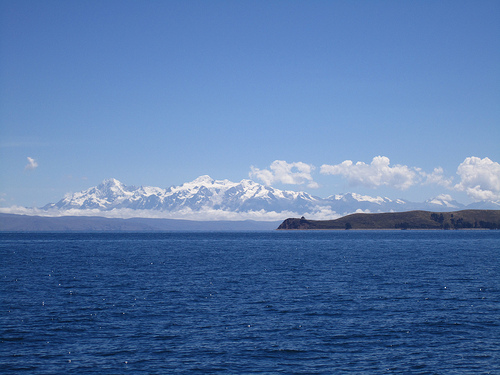Lake Titicaca is the home of islands of reeds.
- Lake Titicaca is a mountain lake that sits in the Tinajani Basin located in South America, along Bolivia’s and Peru’s borders.
- ‘Lake Titicaca’ is also known as ‘Lake Titiqaqa’, and ‘titicaca’ is commonly believed to have the meaning ‘rock of the puma’, although the origin of the name is uncertain.
- Lake Titicaca has more water than any other lake in South America, and is the highest lake in the world that can be crossed by ships.
- The surface of Lake Titicaca is 3,812 metres (12,507 feet) above sea level.
- Lake Titicaca is 8,372 square kilometres (3,232.4 square miles) in area and has a depth of up to 281 metres (922 feet).
Lake Titicaca
Image courtesy of Alicia Nijdam/Flickr
- Lake Titicaca is sourced by 5 major rivers and 22 minor water sources, in turn typically sourced by glaciers, and the lake sources Desaguadero River.
- Lake Titicaca is the home to many water birds, fish and other aquatic species, including the exclusive Titicaca water frog and the Titicaca grebe.
- Lake Titicaca is the home of multiple habitable and inhabitable islands, some of which are made of reeds that float and are home to the Uru people.
- Lake Titicaca has a temperature averaging 10 to 14°C (50 to 57°F) on the surface.
- Lake Titicaca, according to Incan legend, was the birth place of Manco Cápac, the first Incan king, and for this reason the lake is considered sacred and attracts thousands of visitors every year.
Bibliography:
Lake Titicaca, 2008, Lake Titicaca, http://www.laketiticaca.org/
Lake Titicaca, 2014, Wikipedia, http://en.wikipedia.org/wiki/Lake_Titicaca







